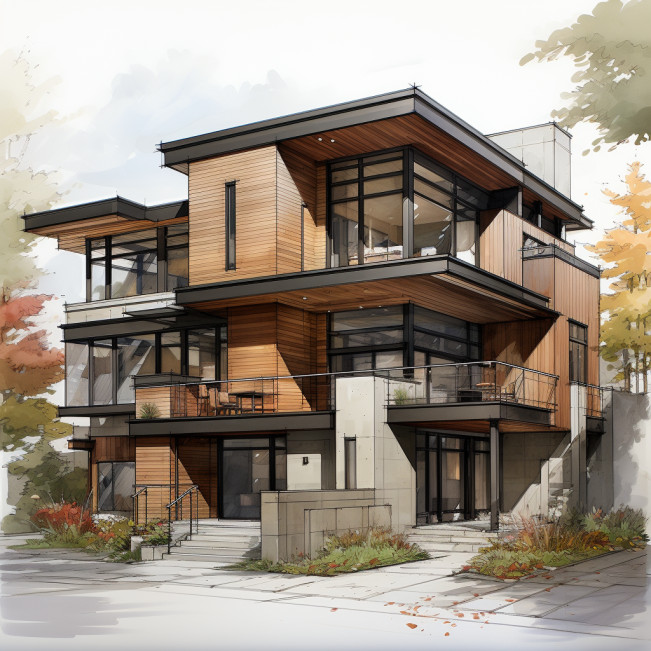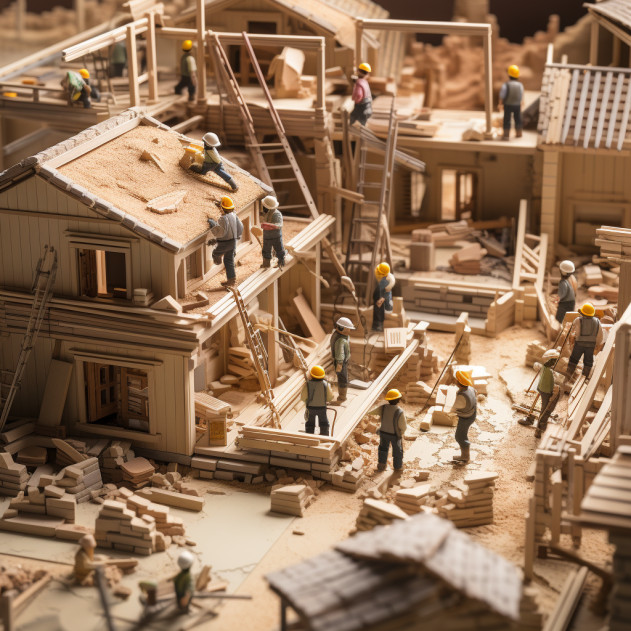
In the realm of custom home building, the concept of passive house construction has gained significant attention for its numerous benefits. This article aims to explore the 4 key advantages of embracing the passive house standard in custom home construction.
From enhanced energy efficiency and improved indoor air quality to a sustainable and environmentally conscious approach, passive house construction offers a promising future for the creation of sustainable and comfortable homes.
Discover how this innovative building approach can revolutionize the way we build and live.
Table of Contents
Understanding the Essence of the Passive House Standard

The essence of the Passive House Standard lies in its rigorous energy efficiency requirements and its focus on creating a comfortable and healthy indoor environment. Passive house buildings are designed to minimize energy consumption and maximize energy savings. This is achieved through a combination of passive house design principles, such as airtight building envelopes, high levels of insulation, and efficient heating and cooling systems.
One of the key aspects of the passive house standard is the emphasis on indoor air quality. Passive house buildings are equipped with mechanical ventilation systems that continuously supply fresh air while efficiently recovering heat from the exhaust air. This ensures a constant supply of clean and filtered air, promoting a healthy living environment.
Another important aspect of passive house design is the use of energy-efficient windows. Passive house windows are specially designed to minimize heat loss, while still allowing for ample natural light and views. These windows typically have multiple layers of glazing and insulated frames, contributing to the overall energy efficiency of the building.
Passive House Construction: A Sustainable Building Approach
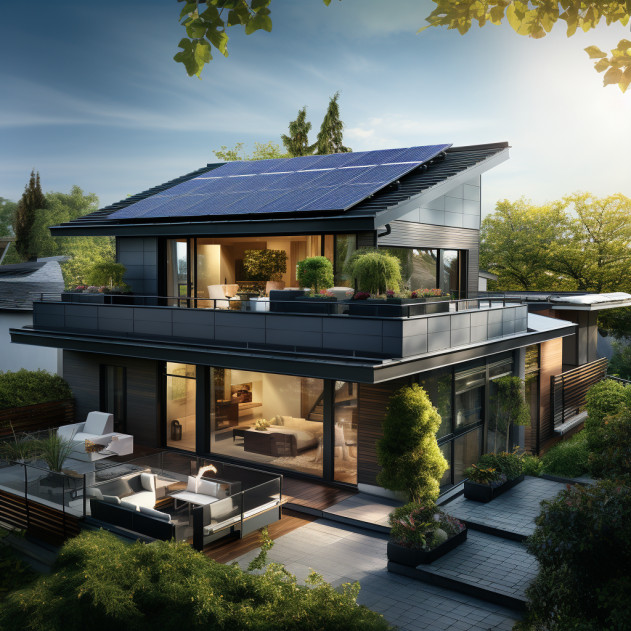
Passive House construction embraces a sustainable building approach that prioritizes energy efficiency and environmental responsibility. The passive house concept is centered around creating highly energy-efficient buildings that minimize their ecological footprint.
Key elements of passive house construction include a well-insulated and airtight building envelope, effective moisture control, and the use of high-performance windows. Ventilation systems with heat recovery are also essential to ensure a constant supply of fresh air while minimizing energy loss.
By implementing these strategies, passive houses can achieve remarkable energy savings, often reducing heating and cooling demands by up to 90% compared to conventional buildings. Furthermore, the long-term cost savings associated with passive house construction are significant, as reduced energy consumption leads to lower utility bills and increased sustainability.
This sustainable building approach is not only beneficial for homeowners but also for the environment as it helps reduce greenhouse gas emissions and promotes a greener future.
The Core Principles of Passive House Buildings
With a focus on energy efficiency and environmental responsibility, passive house construction embodies the core principles of sustainability and resource conservation.
One key principle of passive house construction is the design and construction of nearly zero-energy buildings, which greatly reduces energy costs.
Another principle is proper solar heat gain, which involves strategically positioning windows and using shading devices to maximize natural light and heat during colder months while minimizing heat gain during warmer months.
Additionally, passive house standards prioritize airtightness and insulation to prevent energy loss and ensure a comfortable indoor environment.
The principles also include the provision of fresh air through mechanical ventilation systems, which not only improves indoor air quality but also enhances energy efficiency by recovering heat from outgoing air.
Energy Efficiency and Passive House: A Perfect Match
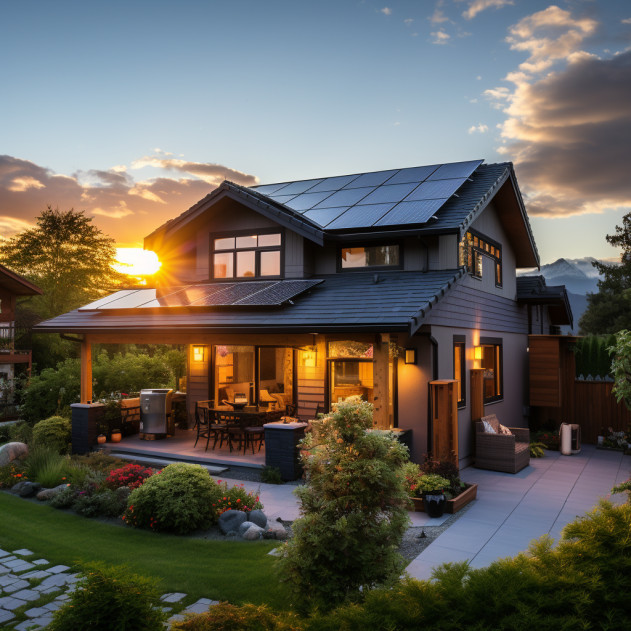
Energy efficiency is a natural complement to the principles of passive house construction, as it enables homeowners to significantly reduce their energy consumption and carbon footprint. When comparing passive house construction to traditional building methods, the energy efficiency of passive homes is unmatched.
Passive house certification requires adherence to strict building standards, including high levels of insulation, air tightness, and efficient mechanical systems. By minimizing heat transfer and air leakage, passive houses effectively reduce the need for heating and cooling, resulting in lower operating costs.
Additionally, passive houses utilize a balanced ventilation system with heat recovery, ensuring a constant supply of fresh air while minimizing energy loss. The integration of energy-efficient design and passive house construction provides homeowners with a sustainable and comfortable living environment while reducing their impact on the environment.
How Passive House Enhances Indoor Air Quality

One significant improvement offered by passive house construction is the enhancement of indoor air quality through the implementation of advanced ventilation systems. Passive building design focuses on optimizing energy efficiency while maintaining air control and vapor control design. By minimizing air leakage and utilizing mechanical ventilation, passive houses can effectively filter and circulate fresh air throughout the building. This helps to remove pollutants, allergens, and excess moisture, improving the overall air quality.
Additionally, the reduction in heating and cooling loads in passive houses reduces the need for traditional HVAC systems, which can contribute to indoor air pollution. By controlling the entry of outdoor pollutants and preventing mold growth, passive houses provide a healthier living environment with improved air quality for occupants.
The Green Revolution: Passive House Benefits for Homeowners
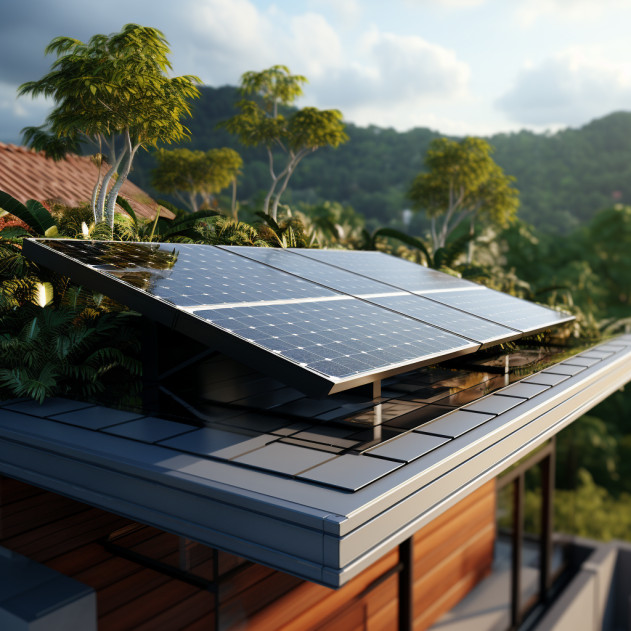
Passive house construction offers homeowners the opportunity to embrace sustainable living practices while enjoying numerous benefits. As certified by the Passive House Institute, these homes are designed and constructed to maximize energy efficiency, surpassing conventional buildings in terms of energy performance.
By minimizing heat flow through the building envelope, passive houses require significantly less energy for heating and cooling systems. This results in substantial savings on energy bills for homeowners. Additionally, the construction costs of passive houses are comparable to those of conventional buildings, and the long-term savings on energy expenses make them a cost-effective choice.
The energy-efficient design and construction of passive houses also contribute to a healthier indoor environment, with improved air quality and reduced noise pollution. Overall, investing in a passive house not only benefits the environment but also provides homeowners with substantial financial savings and a higher quality of life.
4 Key Benefits of Passive House Construction in Custom Home Building
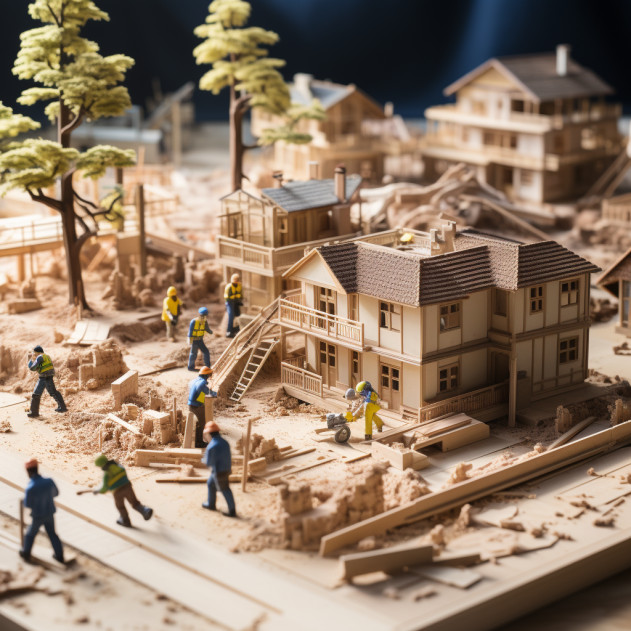
Passive house construction, also known as Passivhaus, is an energy-efficient building standard that focuses on creating highly insulated, airtight, and well-ventilated homes. Custom home builders can reap several key benefits from implementing passive house construction techniques:
1. Superior Energy Efficiency:
Passive houses are designed to be extremely energy-efficient. They reduce heating and cooling costs by as much as 90% compared to conventional homes. This is achieved through a combination of thick insulation, airtight construction, and high-performance windows and doors. The building envelope minimizes heat loss in the winter and heat gain in the summer, leading to significant energy savings.
2. Exceptional Indoor Comfort:
Passive houses are known for providing superior indoor comfort. The high-quality insulation and airtight construction help maintain a consistent and comfortable indoor temperature year-round. There are minimal temperature fluctuations, drafts, or cold spots, resulting in a more comfortable living environment. Additionally, well-designed ventilation systems ensure a constant supply of fresh air without drafts, maintaining high indoor air quality.
3. Health and Wellbeing:
Passive house construction also contributes to the health and wellbeing of the occupants. The focus on airtightness and ventilation systems with heat recovery helps prevent moisture and mold problems, ensuring a healthy indoor environment. Additionally, the use of non-toxic building materials and finishes, as well as improved indoor air quality, can reduce the risk of allergies and respiratory issues.
4. Environmental Sustainability:
Custom home builders can position themselves as environmentally conscious by adopting passive house construction techniques. These homes significantly reduce their carbon footprint due to reduced energy consumption. By relying on passive design principles, efficient insulation, and energy-efficient HVAC systems, passive houses contribute to lower greenhouse gas emissions, mitigating their impact on the environment. This commitment to sustainability can be a selling point for eco-conscious homebuyers.
Key Features of Passive House Construction
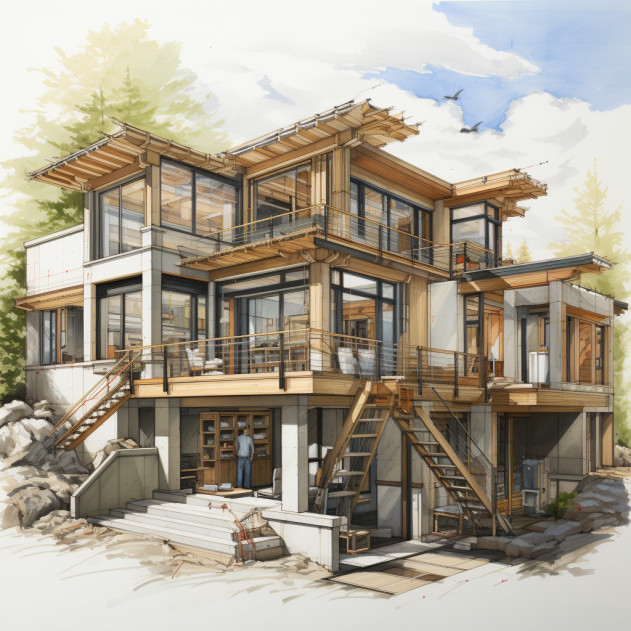
Passive house construction incorporates several key features that contribute to its energy efficiency and sustainable design.
These features are designed to work together to create a comfortable and energy-efficient living space.
The first feature is the consideration of climate and building type. Passive house construction is adaptable to different climates and can be applied to both residential and non-residential buildings.
Another important feature is the use of continuous insulation, which helps to eliminate thermal bridging and maintain a consistent temperature throughout the building.
Triple-paned windows are also a key feature, as they provide excellent insulation and reduce heat loss.
Balanced ventilation is another essential component, ensuring a constant supply of fresh air while expelling stale air.
Solar radiation is harnessed to provide heating, while a blower door test is conducted to ensure the building is airtight and free from drafts.
Achieving Superior Indoor Air Quality in Passive Houses
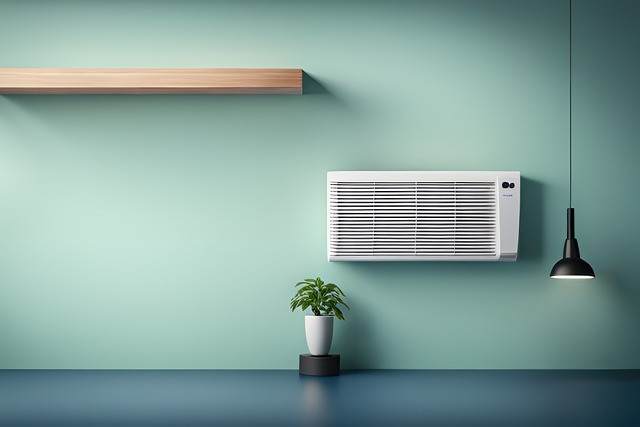
Achieving optimal indoor air quality is a fundamental objective in passive house construction. Passive houses are designed to have a continuous supply of clean and fresh air, ensuring a healthy living environment for the occupants.
Here are two key factors that contribute to achieving superior indoor air quality in passive houses:
Cold corners: Passive houses are designed to eliminate cold corners, which are areas where stagnant air can accumulate. This ensures that the air circulates evenly throughout the house, preventing the buildup of pollutants.
Heat exchanger: Passive houses are equipped with a high-performance heat exchanger, which not only helps to maintain a comfortable indoor temperature but also filters the supply air. This ensures that the air entering the house is clean and free from pollutants.
By incorporating these features, passive houses provide an extremely quiet and healthy living environment. Additionally, triple-paned windows, depending on the region, can be used to further enhance indoor air quality.
Research projects have shown that passive houses consume significantly less energy per square foot compared to traditional homes, while providing superior indoor air quality.
Benefits Beyond Energy Efficiency: Passive House Standards
With a focus on creating sustainable and healthy living environments, passive house construction goes beyond energy efficiency by adhering to stringent standards. These standards are designed to address not only energy consumption but also other important factors such as indoor air quality, thermal comfort, and durability.
One of the key benefits of passive house construction is its applicability to multifamily apartment buildings. By incorporating passive design principles, these buildings can significantly reduce energy consumption and greenhouse gas emissions, contributing to the fight against climate change. Additionally, passive house standards also prioritize radiation control, ensuring that occupants are protected from harmful solar radiation while still benefiting from natural light.
Passive House Building: The Future of Sustainable Homes
Embracing innovative construction practices, the future of sustainable homes lies in the implementation of passive house building techniques. Passive house buildings are designed to maximize energy efficiency, reduce carbon emissions, and provide a comfortable living environment.
Here are two key reasons why passive house building is the future of sustainable homes:
Energy Efficiency: Passive house buildings use advanced insulation techniques, airtight construction, and high-performance windows to minimize energy loss. This results in significantly reduced heating and cooling demands, leading to lower energy consumption and costs.
Indoor Comfort: Passive house buildings prioritize occupant comfort by ensuring a consistent temperature throughout the year, free from drafts and cold spots. This is achieved through a combination of excellent insulation, ventilation systems, and careful design.
Maximizing Comfort in Passive House Custom Homes
In the pursuit of creating optimal living conditions, passive house custom homes focus on the efficient utilization of resources and the enhancement of occupant comfort. By incorporating high-performance insulation, airtight construction, and advanced ventilation systems, these homes provide a level of comfort that surpasses traditional construction methods.
The thick insulation and airtight design minimize drafts and heat loss, ensuring a consistent and comfortable indoor temperature year-round. Additionally, the advanced ventilation systems filter and circulate fresh air, removing pollutants and allergens, and maintaining a healthy indoor environment.
Passive house custom homes also prioritize natural lighting, maximizing the use of windows and skylights to flood the interior spaces with abundant natural light, promoting a sense of well-being and reducing the reliance on artificial lighting. These features combine to create a comfortable, healthy, and enjoyable living experience for occupants.
The Role of Passive House in Environmentally Conscious Living
As we transition to the subtopic of ‘The Role of Passive House in Environmentally Conscious Living’, it is important to consider how these sustainable homes contribute to a greener future. Passive House construction plays a crucial role in promoting environmentally conscious living by reducing energy consumption and minimizing carbon emissions.
Here are two key ways in which Passive House homes contribute to a greener future:
Energy Efficiency:
Passive House homes are designed to be highly energy-efficient, utilizing insulation, airtightness, and heat recovery systems to minimize energy loss and reduce the need for heating or cooling.
These homes significantly reduce energy consumption, leading to lower greenhouse gas emissions and a smaller carbon footprint.
Renewable Energy Integration:
Passive House homes are well-suited for integrating renewable energy sources such as solar panels or geothermal systems.
By harnessing renewable energy, these homes can further reduce their reliance on fossil fuels and contribute to a more sustainable energy mix.
Frequently Asked Questions
How Long Does It Typically Take to Construct a Passive House?
The construction time for a passive house can vary depending on several factors, such as the size and complexity of the project, as well as the experience and efficiency of the construction team.
Are There Any Specific Design Requirements for Passive House Construction?
There are specific design requirements for passive house construction, which focus on achieving a high level of energy efficiency and comfort. These include airtight building envelopes, high-performance windows, insulation, and ventilation systems.
Can Existing Homes Be Retrofitted to Meet Passive House Standards?
Yes, existing homes can be retrofitted to meet passive house standards. This involves improving insulation, air tightness, and ventilation systems. It may also require the installation of energy-efficient windows and doors and upgrading heating and cooling appliances.
Are There Any Additional Costs Associated With Passive House Construction Compared to Traditional Methods?
Yes, there are additional costs associated with passive house construction compared to traditional methods. These costs include materials such as high-performance windows and insulation, as well as the labor required for proper installation and air sealing. However, the long-term energy savings can offset these initial expenses.
How Does Passive House Construction Contribute to Reducing Carbon Emissions and Combating Climate Change?
Passive house construction contributes to reducing carbon emissions and combating climate change by incorporating energy-efficient design principles, such as excellent insulation, airtight building envelope, and mechanical ventilation, which minimize the need for heating and cooling, thus reducing the reliance on fossil fuels.
Conclusion
In conclusion, passive house construction offers several key advantages in custom home building.
It provides a sustainable building approach that prioritizes energy efficiency, resulting in reduced energy consumption and lower utility costs.
Additionally, passive house standards enhance indoor air quality, creating a healthier living environment.
With its focus on environmental consciousness and maximizing comfort, passive house building is poised to be the future of sustainable homes.
